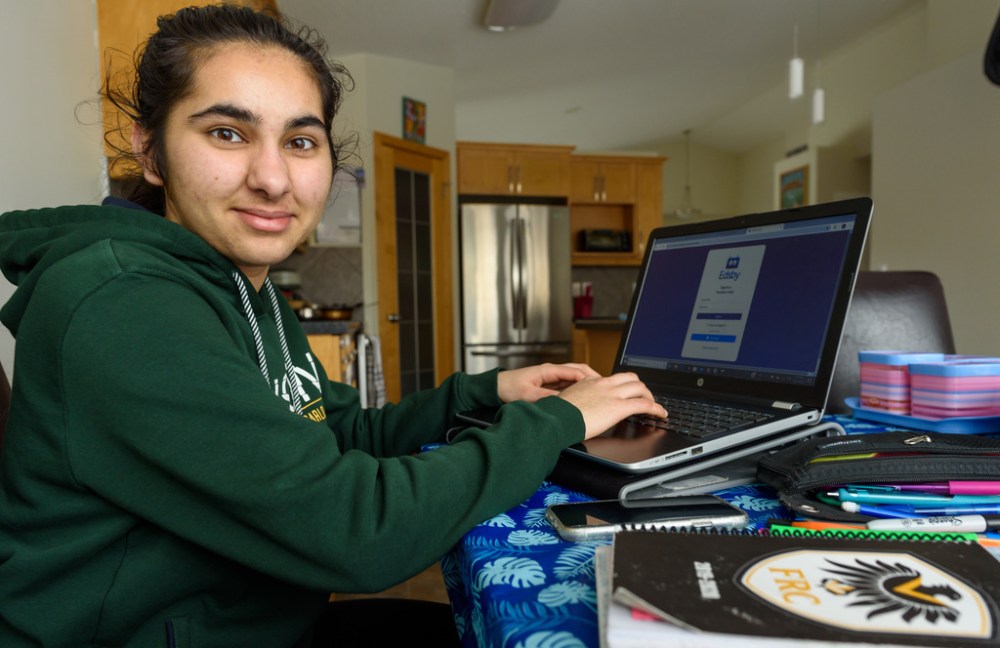Public schools cram for final bell before imposed hiatus
Read this article for free:
or
Already have an account? Log in here »
To continue reading, please subscribe:
Monthly Digital Subscription
$0 for the first 4 weeks*
- Enjoy unlimited reading on winnipegfreepress.com
- Read the E-Edition, our digital replica newspaper
- Access News Break, our award-winning app
- Play interactive puzzles
*No charge for 4 weeks then price increases to the regular rate of $19.00 plus GST every four weeks. Offer available to new and qualified returning subscribers only. Cancel any time.
Monthly Digital Subscription
$4.75/week*
- Enjoy unlimited reading on winnipegfreepress.com
- Read the E-Edition, our digital replica newspaper
- Access News Break, our award-winning app
- Play interactive puzzles
*Billed as $19 plus GST every four weeks. Cancel any time.
To continue reading, please subscribe:
Add Free Press access to your Brandon Sun subscription for only an additional
$1 for the first 4 weeks*
*Your next subscription payment will increase by $1.00 and you will be charged $16.99 plus GST for four weeks. After four weeks, your payment will increase to $23.99 plus GST every four weeks.
Read unlimited articles for free today:
or
Already have an account? Log in here »
Hey there, time traveller!
This article was published 17/03/2020 (2096 days ago), so information in it may no longer be current.
Video call lessons. Care packages of glue sticks and scissors. Designated pick-up zones for students to collect reading materials and paper assignments.
These are some of the ways teachers across the province are preparing for the impromptu class suspensions.
Starting next week, approximately 210,000 students enrolled in Manitoba public schools will be out of class for three weeks — one week wedged on either side of the scheduled spring break.

“Digital is the mainstream, but we also have to be cognizant that not everybody might have access to that, and the libraries are closed. It’s on us to find a way to get that information to kids and those materials to students. We’re looking at all elements of the students we serve,” said Lorelei Steffler, principal at St. James Collegiate in Winnipeg.
Province-wide, thousands of teachers are brainstorming ways to create lesson plans for satellite courses during the interruption. Many of them, alongside technology support staff, are setting up accounts and updating profiles on social media and virtual classroom platforms, such as Seesaw, Showbie and Edmodo.
Steffler said Tuesday she’s been impressed by her colleagues’ alternative plans. Among them, recording how-to videos, sourcing from educational websites to share links with students, and uploading assignments to Edmodo in lieu of in-person instruction. (The software allows teachers to post multimedia content on the website, which mimics Facebook’s template, and correspond with students.)
“Digital is the mainstream, but we also have to be cognizant that not everybody might have access to that, and the libraries are closed. It’s on us to find a way to get that information to kids and those materials to students. We’re looking at all elements of the students we serve.” – Lorelei Steffler, principal at St. James Collegiate in Winnipeg
As for students who don’t have access to screens at home, Steffler said there will be opportunities for pupils to pick-up physical copies of coursework at designated zones and times.
Arrangements for the coming weeks are in progress, but teachers are already having to be flexible as class sizes dwindle ahead of the official suspensions.
All school divisions have seen sizable drops in attendance this week.
More than half of the Winnipeg School Division’s student population didn’t show up to class Tuesday; Louis Riel recorded 9,355 absences — up from 2,437 Monday, and about 60 per cent of the study body; according to a spokesperson, Pembina Trails recorded “higher-than-normal absenteeism rates” across its 35 schools.
Divya Sharma, a Grade 10 student at Fort Richmond Collegiate in Winnipeg, was one of five students Tuesday in her first-period class, which usually has 30 students. The desks have been distanced from each other.
Although her parents advised her not to go to class, Divya said she’s going this week because she’s taking honours courses and she’s a visual learner who learns best when taught by teachers face-to-face.
School, however, hasn’t been the same, as teachers organize lessons for the coming weeks and all sports and extracurricular activities are cancelled, she said. One of her teachers has set-up a YouTube channel, another is asking students to use online platforms to access and print lessons both for now and in the coming weeks.
“It’s not going to be as productive, because when you’re in a class setting, you’re constantly being reminded to talk to your peers, exchange ideas and work. When you’re at home, there isn’t necessarily that rigid timetable, where you have to plan things out,” Divya said.
Her classmates have been talking about spending the break watching Netflix rather than studying, the 15-year-old added.
Meanwhile, the province continues to reassure Manitobans public schools are safe and the class suspensions are simply a proactive measure.
“It’s not going to be as productive, because when you’re in a class setting, you’re constantly being reminded to talk to your peers, exchange ideas and work. When you’re at home, there isn’t necessarily that rigid timetable, where you have to plan things out.” – Divya Sharma, a Grade 10 student at Fort Richmond Collegiate
Premier Brian Pallister reiterated Tuesday schools will remain open through March 20 to accommodate those who don’t have other child-care options.
Earlier this week, the Manitoba Teachers’ Society called on the province to cancel schools by Wednesday, at the latest.
Paul Olson, a Grade 4 teacher at École Rivière-Rouge, echoed the sentiment Tuesday, citing it would be unfair for him to teach the five students who showed up to class new content when almost two dozen others are missing.
“We rocked the whole social-distancing thing, but what we’re doing right now is working on an ongoing assignments,” Olson said. “We’re in a bit of a holding pattern.”
Planning ahead for the final bell Friday, principal Fortunato Lim said his priority is making students and families feel connected to Riverbend Community School, despite them being physically isolated from classes and teachers.
“I know we’re all trying to isolate now, but it doesn’t mean we need to be isolated from each other,” Lim said, adding 100 per cent of the families at Riverbend have access to a screen of some sort in order to receive communication and online lessons from the north Winnipeg school.
Technology aside, the early-years teachers are sending children home with paper packages, books to borrow, and outdoor learning activities.
Not only have administrators contacted families about offering them packages with school materials, but they’ve also reached out to students who access the breakfast program to let them know the school will provide them with loaves of bread and cereal for the break.
maggie.macintosh@freepress.mb.ca
Twitter: @macintoshmaggie

Maggie Macintosh reports on education for the Winnipeg Free Press. Funding for the Free Press education reporter comes from the Government of Canada through the Local Journalism Initiative.
Our newsroom depends on a growing audience of readers to power our journalism. If you are not a paid reader, please consider becoming a subscriber.
Our newsroom depends on its audience of readers to power our journalism. Thank you for your support.






